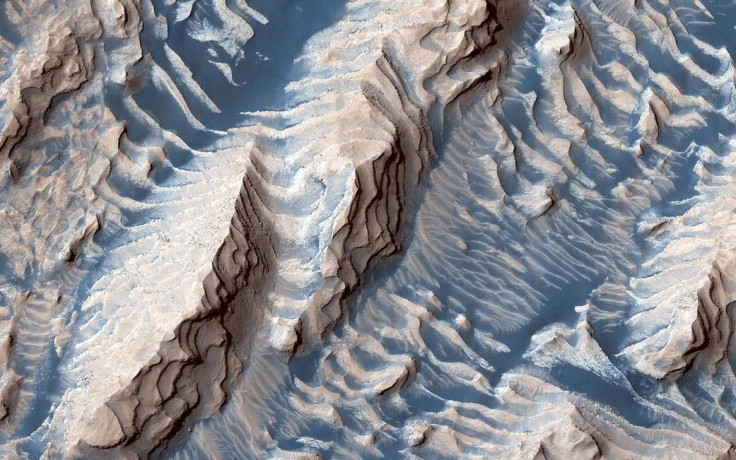NASA Mars Photo Shows Stunning Danielson Crater Formed Billions Of Years Ago

NASA was able to capture a photo of the zebra stripe-like pattern of the rock and sand layers in one of Mars’ craters. According to the space agency, the unusual formation in the crater was formed billions of years ago.
The latest image from the Red Planet was taken by NASA’s Mars Reconnaissance Orbiter. The image features the Danielson Crater, which is an impact crater that has a diameter of about 42 miles.
According to NASA, layers of sediment began forming in the crater millions or possibly billions of years ago. As time went by, these sediments became cemented in place. Winds on the Mars scattered sand across the layers, which gave the formation its strange pattern.
“The rock was formed millions or billions of years ago when loose sediments settled into the crater, one layer at a time, and were later cemented in place,” NASA said in a statement. “Cyclical variations in the sediment properties made some layers more resistant to erosion than others.”
“After eons, these tougher layers protrude outward like stair steps,” the agency continued. “Across these steps, the winds have scattered sand (typically appearing darker and less red, i.e. bluer in contrast-enhanced color), giving rise to the zebra stripe-like patterns.”
NASA wasn’t the only agency that was able to capture a stunning image from Mars. Earlier this week, the European Space Agency (ESA) and Russia’s Roscosmos were able to photograph the ice cream-like dunes of Mars using their ExoMars Trace Gas Orbiter.
As explained by the ESA, the unique appearance of the Martian dunes was caused by the formation of carbon dioxide ice on their surface. This commonly occurs during the winter season on the Red Planet’s polar regions.
Once the spring season begins, the ice layering the surface of the dunes directly transforms into vapor. As it melts, it traps gas in between the Martian sand and the ice. The gas is then released once the layer of ice cracks, causing dark spots to form in certain parts of the dunes. This causes the contrasting appearance of the dark and light spots in the photo.
© Copyright IBTimes 2025. All rights reserved.





















